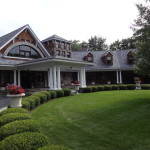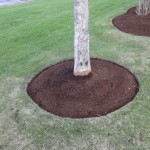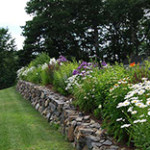Lawn Care Myths
What’s true and what’s not? These are the Top 5 lawn care myths that we want to address once and for all. Myth #1: The best time to plant grass seed is in the Spring. This is not true, especially in Maine. Unpredictable changes in Spring time daily temperatures could put your newly sowed grass seed at risk. A sudden cold spell could kill the tender new grass before it has a chance to harden off. A warm, dry spell could allow weeds that thrive in dry conditions to move in and overtake the new grass. The best time to sow new seed in Maine is in the fall when temperatures are more consistent, and competitive weeds like crabgrass are dormant. Myth #2: Golf courses cut their grass short, so I should do the same. Golf courses use sophisticated methods and very expensive machinery to maintain their turf. The proper mowing height for a healthy, drought resistant lawn is 3-3.5″ A good rule of thumb is to “mow high, mow often” or never remove more than 1/3 of the grass blade at one time. Myth #3: The products that lawn care companies use are dangerous and more powerful than what...
read moreProper Tree Mulching Techniques
Spring Cleanups are finally done and we have shifted into mulch mode here at Terrapin Landscaping. In this blog post, I would like to address the proper way to mulch a tree. Mulching is one of the most beneficial practices a homeowner can use for better tree health. The benefits of proper tree mulching are as follows: Helps reduce soil moisture lost through evaporation. Helps control weed germination and growth. Insulates soil, protecting roots from extreme summer and winter temperatures. Can improve soil biology, aeration, and drainage over time. Can improve soil fertility as certain mulch types decompose. Inhibits certain plant diseases Reduces the likelihood of tree damage from “weed whackers” . Gives planting beds a uniform, manicured look. As beneficial as mulch is, too much can be harmful. The recommended mulching depth is 2 to 4 inches. Unfortunately many landscapes are falling victim to a plague of over mulching. While organic mulches must be replenished over time, build-up can occur if reapplication outpaces decomposition or if new material is added simply to refresh color. Improper tree mulching often results in “mulch volcanoes.” “Mulch volcanoes” are excessive piles of mulch materials applied around the base of trees. Besides being unsightly, over-mulching...
read moreSpring Lawn Care Tips
It might be still partially covered in snow, or a sore sight after the winter we have just endured here in Kennebunkport, but with a bit of work you can help bring your lawn back to life. You may see a fair amount of thatch. Thatch is a normal accumulation of organic matter. In small amounts the thatch layer is beneficial to your lawn as it is full of nutrients and microorganisms. In a healthy lawn the thatch layer could be up to 1 inch thick, but if the thatch has accumulated to more than 1 inch, you will need to remove it before you can attempt any other lawn care projects. This can be done with a good hand raking or with a dethatching machine. The reason for this is that anything you add, such as new seed or fertilizer, will simply sit on top of the thatch rather than getting into the soil. Once the lawn has been de-thatched you can add your fertilizer. This helps the lawn to recover from winter stress. Pre-emergent weed and crabgrass control should also be applied during this step. If you would like to find out more about maintaining a healthy lawn, or just have lawn...
read more


